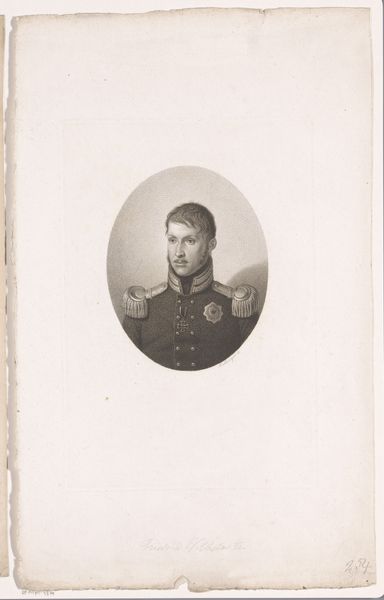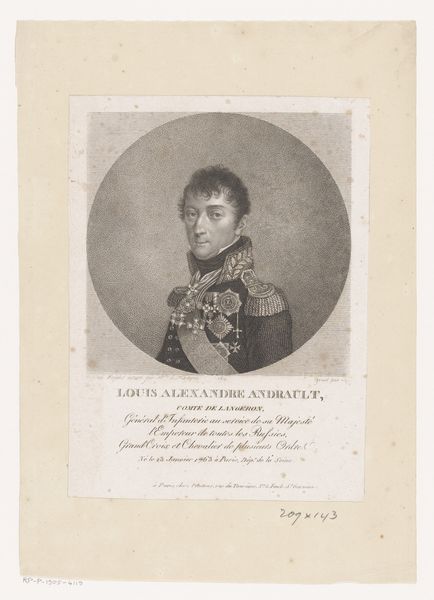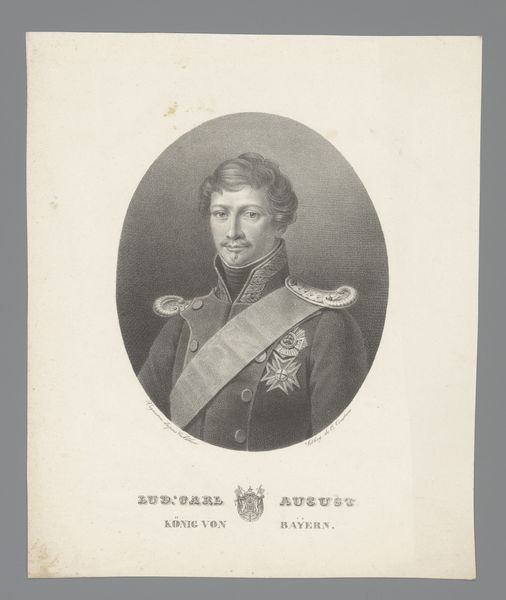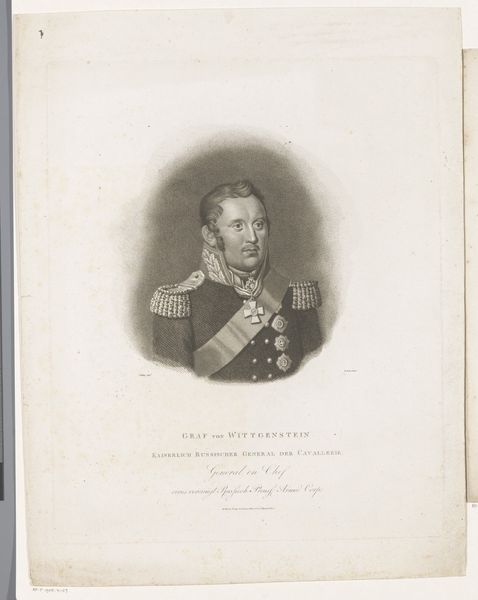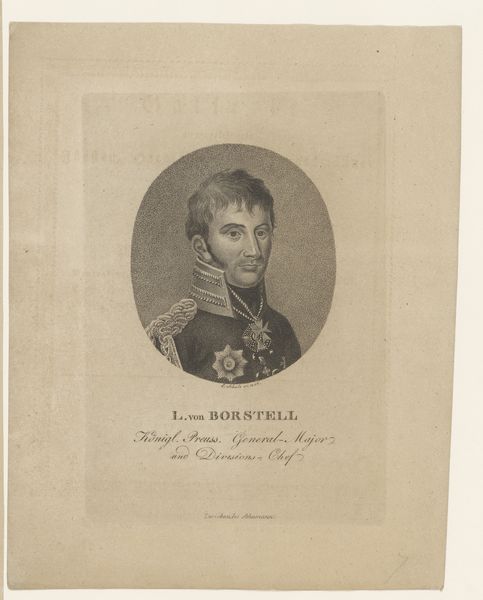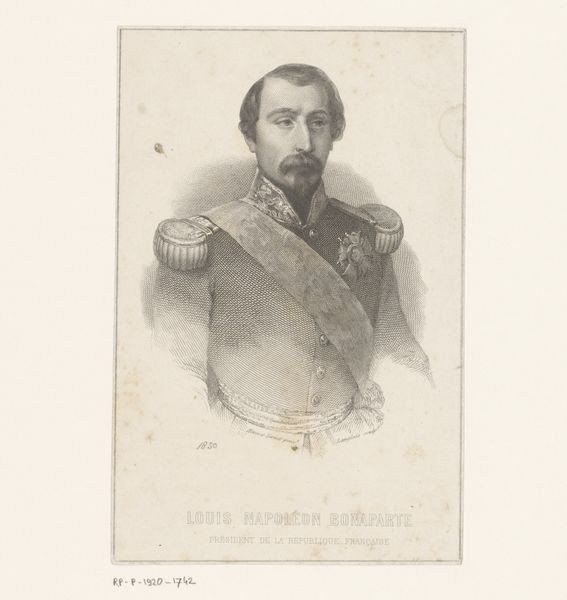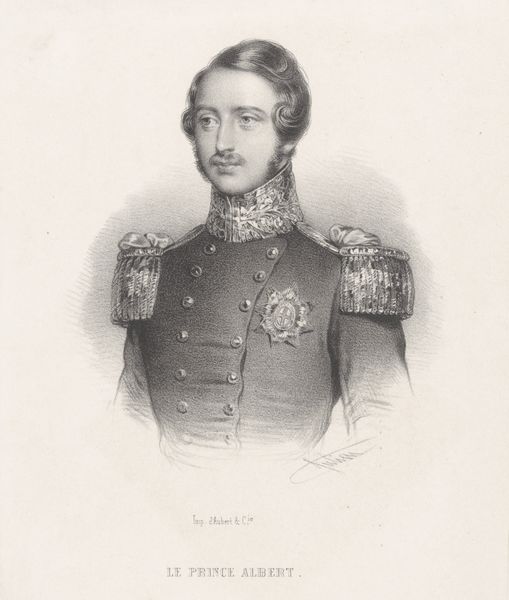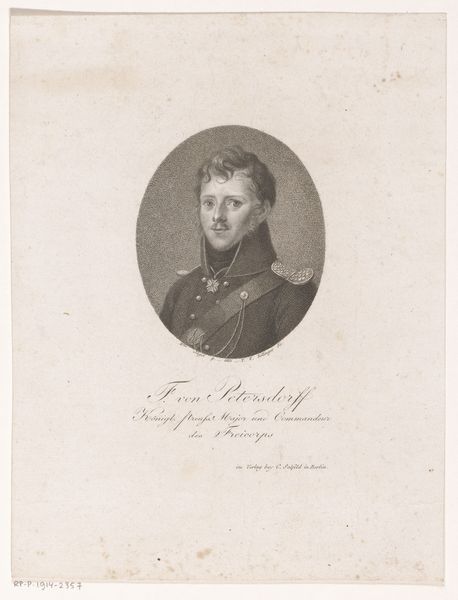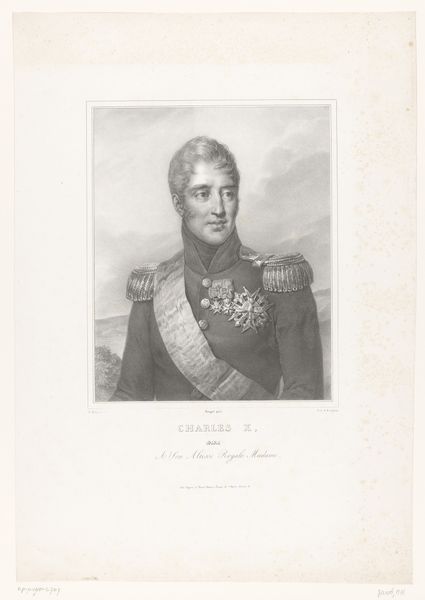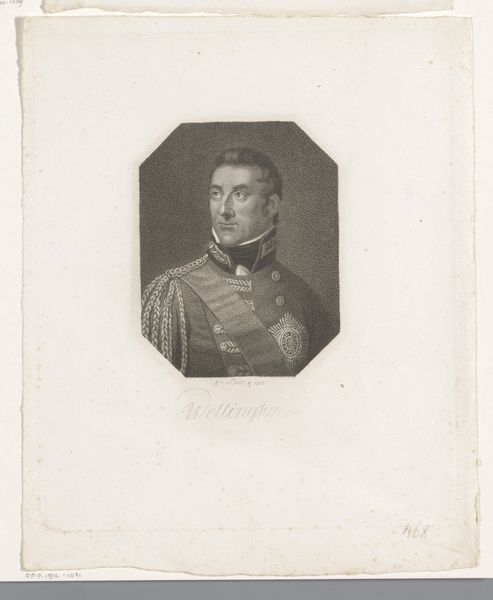
Portret van Friedrich Wilhelm III, koning van Pruisen 1797 - 1825
0:00
0:00
friedrichwilhelmbollinger
Rijksmuseum
print, engraving
#
portrait
#
neoclacissism
# print
#
history-painting
#
engraving
Dimensions: height 315 mm, width 242 mm
Copyright: Rijks Museum: Open Domain
Editor: This is an engraving of Friedrich Wilhelm III, King of Prussia, dating from 1797 to 1825, housed here at the Rijksmuseum. The level of detail achieved through printmaking is really striking. The composition with the ornamental frame is also intriguing. What formal aspects of the work stand out to you? Curator: Focusing on the internal relations of the print, one immediately notices the tension between the geometric regularity of the central portrait’s octagonal border and the organic flow of the floral details intertwining around it. This contrast, viewed through the lens of structuralism, speaks to the broader aesthetic dialogues of the era, a kind of negotiation between rigid forms and naturalistic ornamentation, what do you think of it? Editor: I hadn't considered that particular interplay, it certainly provides a structured contrast. It's not necessarily something I initially noticed, I saw just it as ornamentation. Curator: Precisely. That the organic decorative aspects frame the figure suggests, too, a mediation between personal power and natural order, quite key to Neoclassical portraiture. What of the light, what of the relationship between light and shadow that model form, and that which obscures? Editor: Yes, the light seems intentionally positioned to emphasize his facial features and the metallic details on his uniform. It really draws your eye to those areas. I appreciate that now that you bring it up! I noticed how those reflections draw out depth, it keeps your eye flowing in a satisfying manner. Curator: Indeed, that modulation reveals both the sitter’s bearing and Bollinger's mastery. Ultimately, through attention to form, the print offers insights into 19th-century Prussia. Editor: That makes perfect sense. I’ll definitely look at portraiture through that lens moving forward. Curator: And I see that fresh eyes still bring new possibilities into how we experience these master works.
Comments
No comments
Be the first to comment and join the conversation on the ultimate creative platform.
